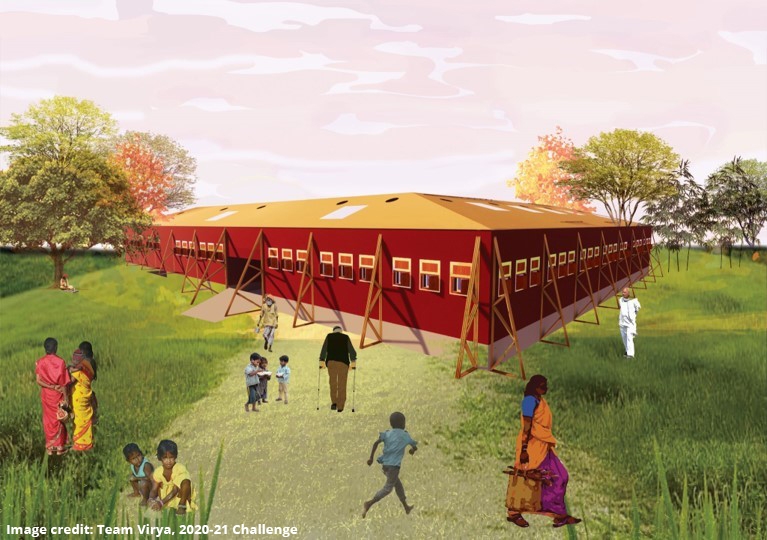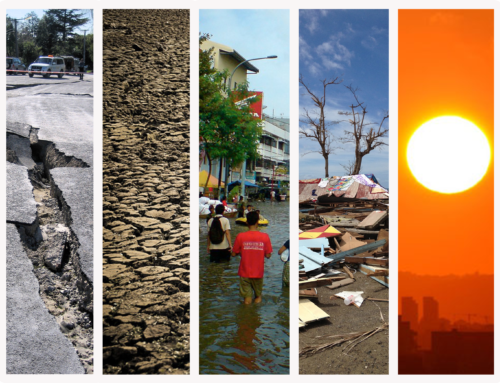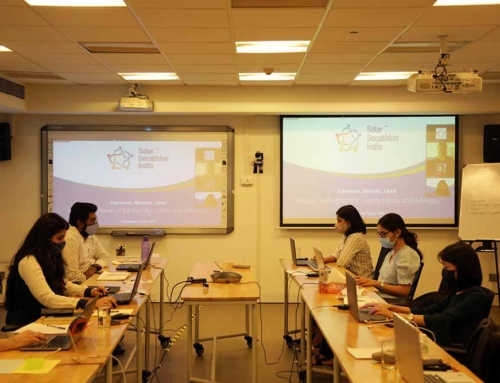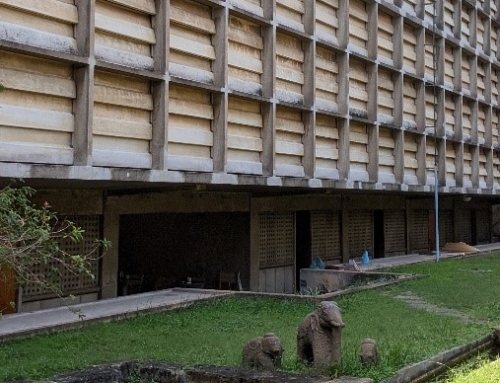Resilient recovery from disasters
September 03, 2021 | Janani Venkatesh
In the past decade or so we have been witnessing disasters more frequently, and at devastating proportions, leaving large populations of people destitute across the globe. Hydro-meteorological events such cyclones, flashfloods, cloudbursts, droughts, heatwaves and other phenomena are becoming common occurrences. And these, according to the sixth assessment of the Intergovernmental Panel on Climate Change, are undeniably anthropogenic. In addition to environmental disasters, we are also currently managing the impacts of the COVID-19 outbreak. Disaster after disaster, we attempt to recover and rebuild all that was lost, but we approach them as independent episodes that wreak havoc on infrastructure, property and lives. Recovery has been restricted to immediate relief, compensations and reconstruction of buildings. Although this process is repeated over and over again with every episode of disaster, what are we missing?
Here, I summarise my reflections from a 3-day workshop where survivors of disasters, researchers, government officials and policy makers, and media professionals shared their perspectives. The Recovery with Dignity workshop was conducted by the Indian Institute for Human Settlements (IIHS) and the University of East Anglia (UEA), and shared learnings from a 3-year project that studied post-disaster recovery in Odisha, Tamil Nadu and Kerala. It shared lessons that help in strengthening resilience among communities and make disaster recovery more holistic, inclusive and sustainable.
The pre-requisites of recovery
Resettlement is the first step to dignified recovery. However, in addition to a roof above the head, access to basic services such and food, sanitation, and electricity in the shelters are pre-requisites. Experiences from survivors point out that whole families with multiple children, were forced to huddle-up in single rooms with no access to electricity. A sense of safety while going to bed is paramount for resilient recovery, they said, considering the trauma and stress that survivors undergo. Women recounted incidents of sexual abuse in Tsunami shelters, as there were no demarcated spaces based on gender.
Recovery itself can be reimagined as a long-term process that takes into account overarching aspects such as rebuilding livelihoods and rejuvenating ecosystems. Survivors of the 2016 Vardah cyclone in Chennai and the 2013 cyclone Phailin in Orissa described their loss of property including lands and fisheries, which were their primary sources of income. Cyclone Phailin resulted in land and surrounding environments getting degraded and water sources becoming brackish. Without revitalization, continuing agriculture was impossible. The survivors were forced to relocate and restart their lives from scratch. In such cases, recovery processes should not just be limited to temporary shelter and food. Enabling people to rebuild their livelihood is just as necessary. Financial assistance to say, restart farming and goat rearing, and revitalizing eroded farmlands can catalyse the rebuilding process. Women driven households can go a long way in quick recovery and income generation in families. For example, an initiative was started during the COVID-19 pandemic where women made mattresses with used PPE kits, to meet the demand for beds.
In Orissa, a seawall project proposed by the government has been on-hold for years now. Despite pleas to fast-track the construction, there has been little progress. The natural seawalls provided by mangroves are getting depleted over the years. Protecting such natural ecosystems can help in reducing the impact of extreme weather events on vulnerable communities to a large extent.
Different impacts, inclusive response
Not all groups experience disasters in the same way. For example, people with disabilities experience the impacts of disasters differently. While responding to disasters, the invisible needs of marginalized communities should be considered to ensure that action is inclusive. Survivors pointed out that Dalits and other marginalized communities were left out from relief measures. They also faced difficulties in getting access to alternate housing. The needs and aspirations of each community are different, and livelihood recovery and infrastructure recovery are different in each context. The best way to address these differences would be to conduct separate, context driven monitoring, such that a non-inclusive response itself does not increase the vulnerability of a group of people.
Holistic and resilient recovery from disasters should go beyond infrastructure needs and include social factors such as nutrition, and education among others. Access to water and sanitation, for instance are important considerations for resilience, without which women and children lose out. Mental health impacts of disasters are stark and recovery from trauma goes hand-in-hand with physical recovery. Holistic recovery also extends beyond the recovery of survivors and includes ecosystem-based approaches to protect the surrounding plants, animals, and the overall microclimate. All these factors have an impact on the physical and emotional recovery of survivors. A thriving ecosystem significantly contributes to building resilience from future disasters.
Such an all-encompassing recovery approach comes from thinking of disaster recovery as a long-term process, rather than a one-off event. Policies do not talk about long-term recovery, especially socio-economic recovery. While disasters are times when vulnerability of communities can intensify, it can be an opportunity for change. Local governments need to rework on their processes and structures to shed historical norms and become adaptable. Dialogues between survivors, panchayat, private sectors, Civil Society Organisations and other transboundary actors can help to learn from experiences in formulating policies and frameworks. Empathy towards the social values of survivors is important while developing policies, as they could prevent resistance to resettlement and ensure last-mile delivery of policies in ground-level action. For example, some people may continue the practice of open defecation, despite access to toilets in the shelters. Such nuances also need to be considered so that there is room for behavioural change and better adaptation to recovery processes by communities. However, recovery can be sustainable only when the ownership lies within communities. Often, recovery and response led by bureaucratic groups tend to be standard, and do not take into account the needs and priorities of the communities. Policies should allow flexibility to enable the communities to navigate power structures and negotiate their recovery needs.
Planning before disaster strikes
The key to effective disaster recovery is to plan for disasters before they even take place. The State Disaster Management Authority can provide micro-data on past disasters that can aid the planning process. Multi-hazard risk-assessments can be conducted to understand the multi-layered vulnerabilities of different communities to different disasters and plan for risk-reduction. This should also include small scale disasters such as snake bites, lightning, forest fire, and others. Many impacts of disasters such as that of climate change materialize over a longer period, and forethought about these impacts can make the disaster planning robust. Communities need to have greater access to live forecast data through radio or other channels, and facilities for transparent and safe data transfer.
Survivors who spoke at the workshop, emphasized the importance of planning, citing their hasty purchases of cheap land, without paying heed to regulations. They had built homes low lying areas and their houses were submerged in floods up to 3 m high, and infested with insects.
Early planning for disasters can be done by referring to the personal and political experiences of communities in the past. Communities and their cultures evolve based on their experiences and over time, their approach to disaster recovery will be based on all these experiences. Community experiences can inform long-term and holistic response and also provide valuable learning while making design considerations. For example, modern materials can be used for resilient construction, but communities may not be able to afford or get access to the same materials later for repairs.
The media plays an important role in the memorialization process, and is complicit in the way disasters and seen and known. The way events and affected communities are portrayed in the media, influence recovery responses. For instance, constant coverage of relief work to survivors can result in normalizing their image as overly dependent or vulnerable people. The portrayal needs to reflect heterogeneous impact. However, it is also important to note that survivors may not be comfortable with such memorialization, as different people have different ways of remembering and forgetting disasters.
Convergence of knowledge
There is a lot that we know about disasters, but there also exists a significant information gap that prevents effective disaster response and building long-term resilience. Lessons from history and predictions of the future from communities and transboundary actors need to be brought to the fore and used to our advantage. With greater interface between scientists, policy makers and practitioners, our communities have the potential to become resilient, vibrant and thriving.






